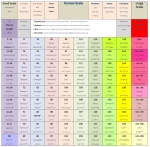  |
Introduction. If you have already read this information from your earlier introduction, just click on the green arrow below. If you have not clicked on the images on the left and right, you may want to do so to get a closer look at the data. If you have not taken the survey, please do. The one on the left was dubbed, the Big Board-little universe. The one on the right is called, the Universe Table. We are still in the earliest-stage development. Both are in their infancy. You’re on the ground floor. Tour Guidelines. Because you can come back any time, we would like to challenge you to go through the next ten pages in ten minutes so you get the big picture. Of course, you can take as long or as little time as you want. Please set your own pace. Plus, you can come back at any time. On the bottom right of each page, you will see a green arrow. When you are ready to move on, just click on it. In the bottom left corner of each page, there is a pink arrow. If for any reason you need to go back a page, click on it. Both charts represent the same thing — our known universe. The very smallest measurement is the Planck Length. The largest is the Observable Universe. This link will take you to next page. |
 |
|
__________________________________________________________________________________________________________ Notes about Look-and-feel and Navigation: If any of the letters from right column, particularly the words, Archives and Meta, are bleeding through the image of the Universe Table, please open your window larger (possibly to full screen). If the header for this page is in more than two line, you also need to open your window a little larger. To go to the next page, you can click on the green arrow yet usually if you click on the last sentence in each description you will go to the next page as well. More notes about the how these charts came to be: Wikipedia on the Planck length This project began when we looked inside a tetrahedron and octahedron (two of the most basic geometric figures). Think of the embedded Russian (matryoshka) dolls. Usually there are no more than ten. Yet, here inside each tetrahedron there are four half-size tetrahedrons and an octahedron. Inside the octahedron are six half-sized octahedrons and eight tetrahedrons all sharing a common centerpoint and many common edges. It would seem that one could just kept going forever. Yet eventually you will reach the Planck length and can go no further. To standardize our study, we started at the Planck Length and multiplied it by 2 until we were at the Observable Universe. We were surprised to discover only 202-to-206 notations (or steps or layers or doublings) to go from the smallest to the largest measurements of a length. |
||
- Comment
- Reblog
-
Subscribe
Subscribed
Already have a WordPress.com account? Log in now.
